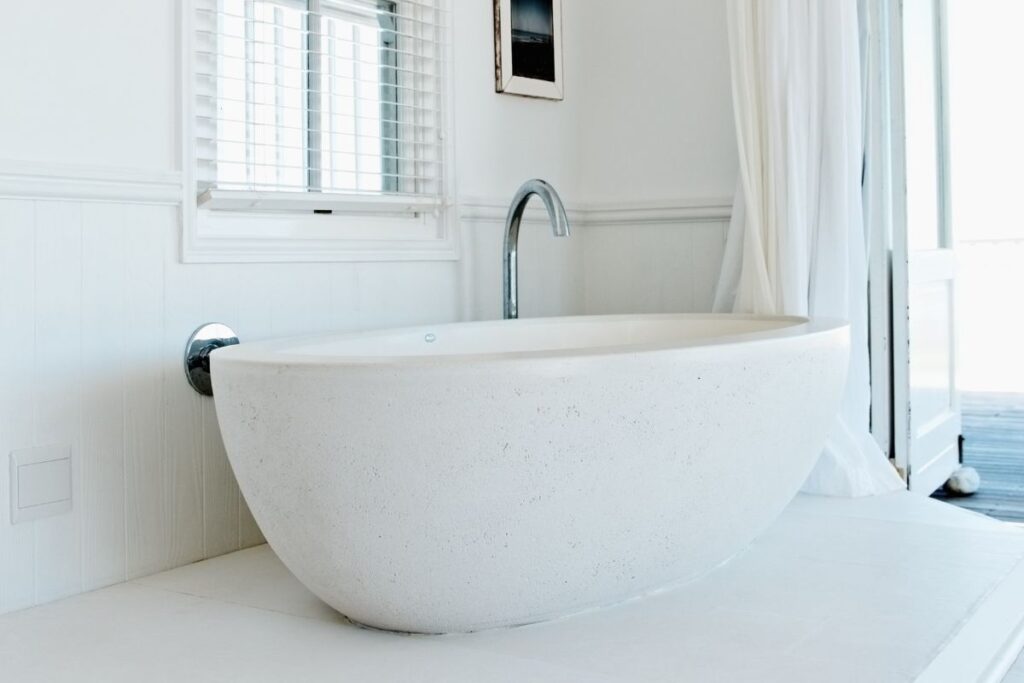
Although they are a good method to minimize falls, have you ever wondered if Medicare covers walk-in tubs? Medicare often won’t pay for their cost since they aren’t regarded as durable medical equipment.
Having said that, it’s possible that original Medicare did occasionally offer financial support. When this happens, the help is provided after the purchase, not before it.
The bathtub would have to be regarded as a crucial medical requirement. The recipient would require a medical diagnostic to support their claim.
In addition, a documented prescription that details the conditions under which a walk-in tub is required, and any brand-specific characteristics is necessary.
Even though walk-in tubs are very helpful, Medicare’s help is not guaranteed.
Table of contents
What is Durable Medical Equipment?
According to Medicare, durable medical equipment is anything that helps you carry out everyday duties and is strong enough to endure numerous uses.
This doesn’t apply to those who are healthy or don’t have disabilities.
Wheelchairs, walkers, and oxygen concentrators are a few definitions of durable medical equipment (DME).
Because a walk-in tub has benefits for everyone, including those who are not disabled, Medicare does not categorize it as a durable medical equipment (DME). Hence, Medicare often won’t pay for the walk-in tub or the installation.
How Walk-In Tubs Help?
You may make your bathroom a bit safer by using specialized equipment like walk-in tubs. Although walk-in bathtubs come in a variety of sizes, most feature a lower barrier that is only 3 to 7 inches high.
The top walk-in bathtubs on the market include hinged doors that are watertight and integrated into the tub’s side.
Although walk-in baths typically feature doors facing inward, unique designs can be purchased to fulfill different requirements.
There are many different tubs available, including quick fill and drain types and therapeutic spa tubs with massage air jets.
Help With The Costs Of A Walk-In Tub
Although walk-in baths are not often covered by Medicare, there are other options for financial support.
Medicaid
Medicaid may occasionally pay all or part of the cost of a walk-in bathtub. Each state’s Medicaid program, some of which may cover walk-in bathtubs, is distinct from the federal Medicaid program as a whole.
These community transition grants, which are available in over 30 different states, are one of your greatest options for paying for a walk-in bathtub.
You should research what Medicaid in your area will cover before purchasing a walk-in bathtub.
Private Insurance
This can occasionally pay a portion of the cost of walk-in bathtubs. But similar to Medicare, it often needs a prescription from a physician.
Although every private insurer may approach this problem differently, they will often advise you to choose less expensive solutions. Like simple bathtubs or walk-in showers because they require less extensive installation and are less expensive.
Veterans Assistance
A walk-in tub can be purchased with the help of veterans’ benefits. Veterans are more likely to receive grants than VA insurance, nevertheless, when they need money.
It is unlikely that veterans having coverage via the CHAMPVA or TRICARE insurance programs will receive assistance with a walk-in tub.
For individuals who need a walk-in bathtub, home renovation grants for veterans are a possibility.
A veteran who needs medical equipment due to age may be eligible for financial assistance under some of the awards offered to ageing veterans that aren’t connected to military service.
Again, this isn’t a general rule, much as with Medicare and Medicaid. You should confirm your eligibility before purchasing a walk-in bathtub.
Payment Plans
Although it won’t quite cover the expense of a walk-in tub, may undoubtedly lower the price of this renovation.
One of the most expensive home improvements is a walk-in tub, which may cost anywhere between $2,000 and $10,000 to install. Some businesses will provide payment plans due to the high price points.
Walk-In Tub Alternatives
The roll-in shower, also known as a low threshold shower, is the most popular alternative to a walk-in tub.
The base of the majority of showers include a 3-6 inch step that is intended to catch the water as it drains. If the shower also functions as a regular tub, these ridges can be raised.
People in wheelchairs cannot access the shower because of these thresholds. A wheelchair may roll right into the bathing area or to a transfer bench in a roll-in shower since there is no threshold.
The bather does not have to wait for the water to fill and drain while using, which is an added bonus.
The same financing options and financial aid are available for walk-in tubs and roll-in showers. Only extremely seldom does Original Medicare pay.
However, certain Medicare Advantage plans today and maybe more in the future may cover roll-in showers.
Medicaid and VA benefits, however, are more likely to assist with the expenses. Roll-in showers may cost less than walk-in bathtubs.
However, the overall cost is more influenced by the installation and design of the bathroom than by the price of the equipment.
Another option is to use a bathtub transfer bench, a mobility aid that offers a seat for you to sit in when entering your current tub.
While you sit on it, the bench slowly glides from the outside to the interior of the tub as it crosses its side.
Bench options range in price from $45 to $300 and come in a wide variety of designs, making them far more inexpensive than walk-in bathtubs.
Summary
Although walk-in baths are a convenient feature for seniors living at home, they are more expensive to install and sometimes not covered by Medicare.
So, if you decide to get a walk-in tub, you should plan your budget properly as you’ll probably have to pay for it out of pocket.
Nevertheless, Medicaid has a variety of program choices based on the state you reside in, and some of those programs will pay all or a portion of the cost of a walk-in bathtub.
To be sure you’re qualified for help, you must do your homework first.
Frequently Asked Questions
The average cost to install a walk-in tub as of 2022 ranges between $2,700 for a tub with standard safety features to $13,500 or more for a luxury model walk-in tub, which includes the cost of materials and labor. The national average cost for a walk-in tub falls around $5,800.
The standard walk-in tub is the most affordable, ranging in price from $1,500 to $5,000. Because they are basic, without upgrades or features, they are lower in price.
Slide-in style bathtubs are similar but different than a walk in tub in ways. For example, these have higher walls with seats molded in them, which swing and allow the user to bathe. Basically, the operator would sit and back up and sit. Then you are able to fill and bathe as you normally would.
